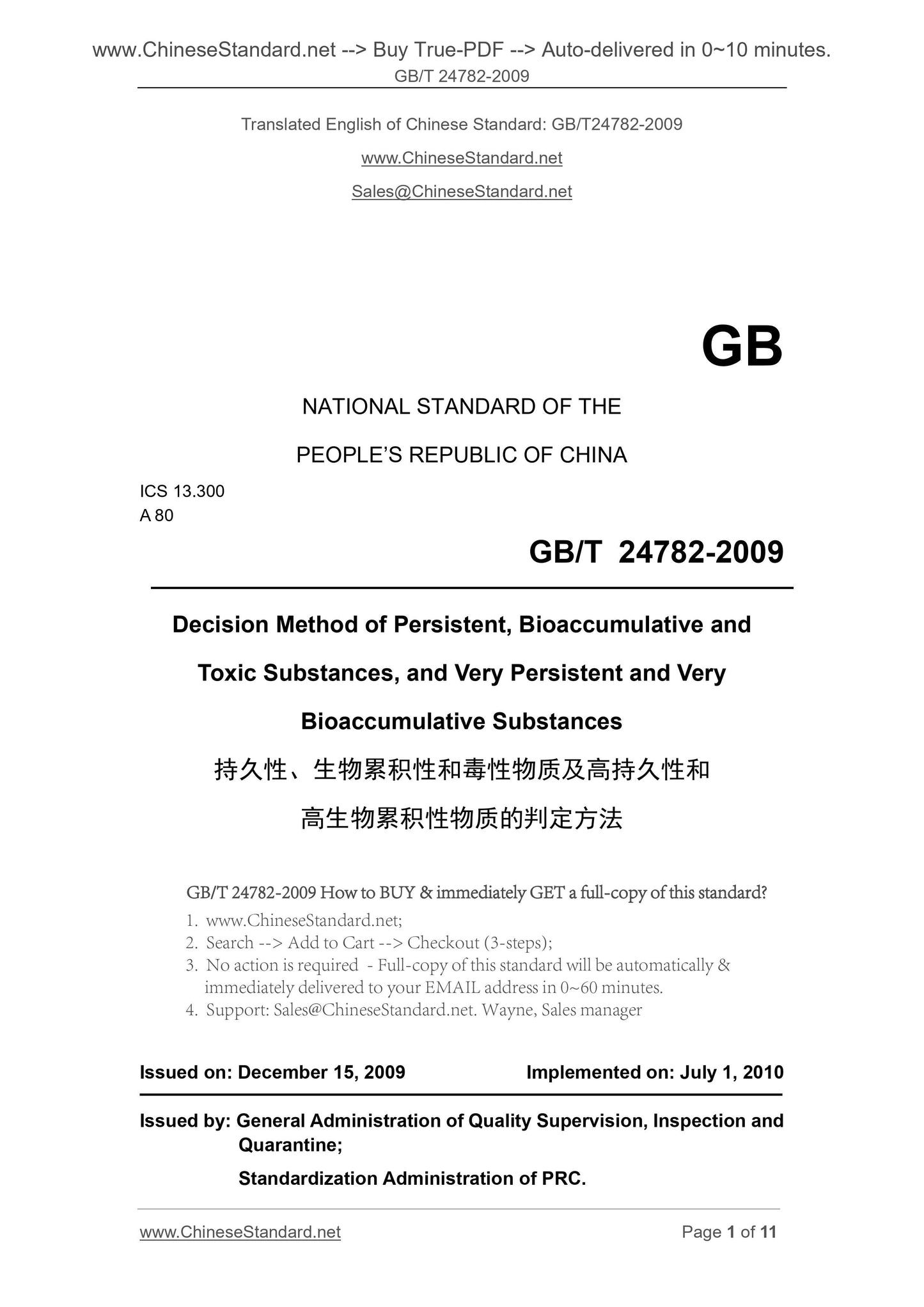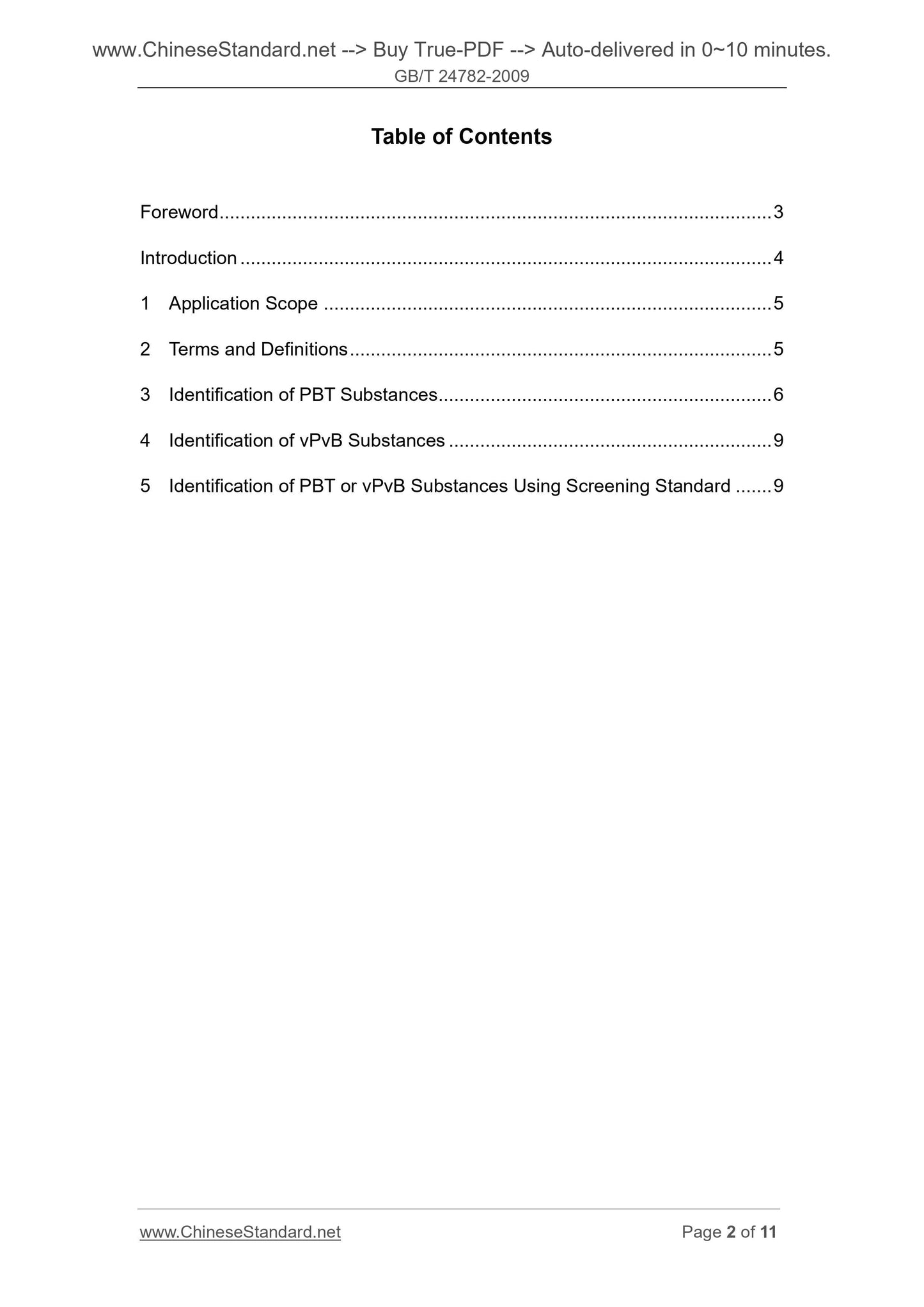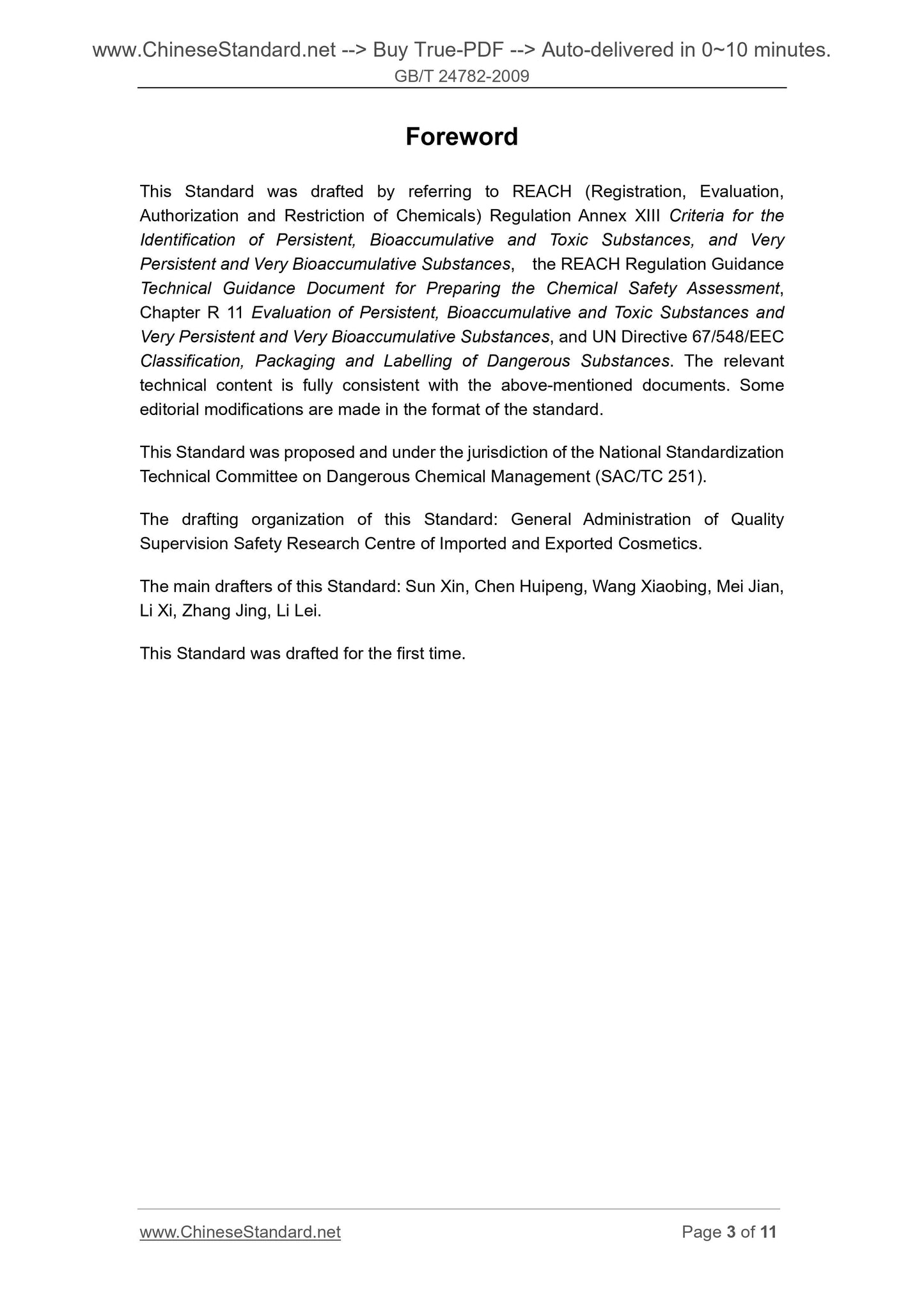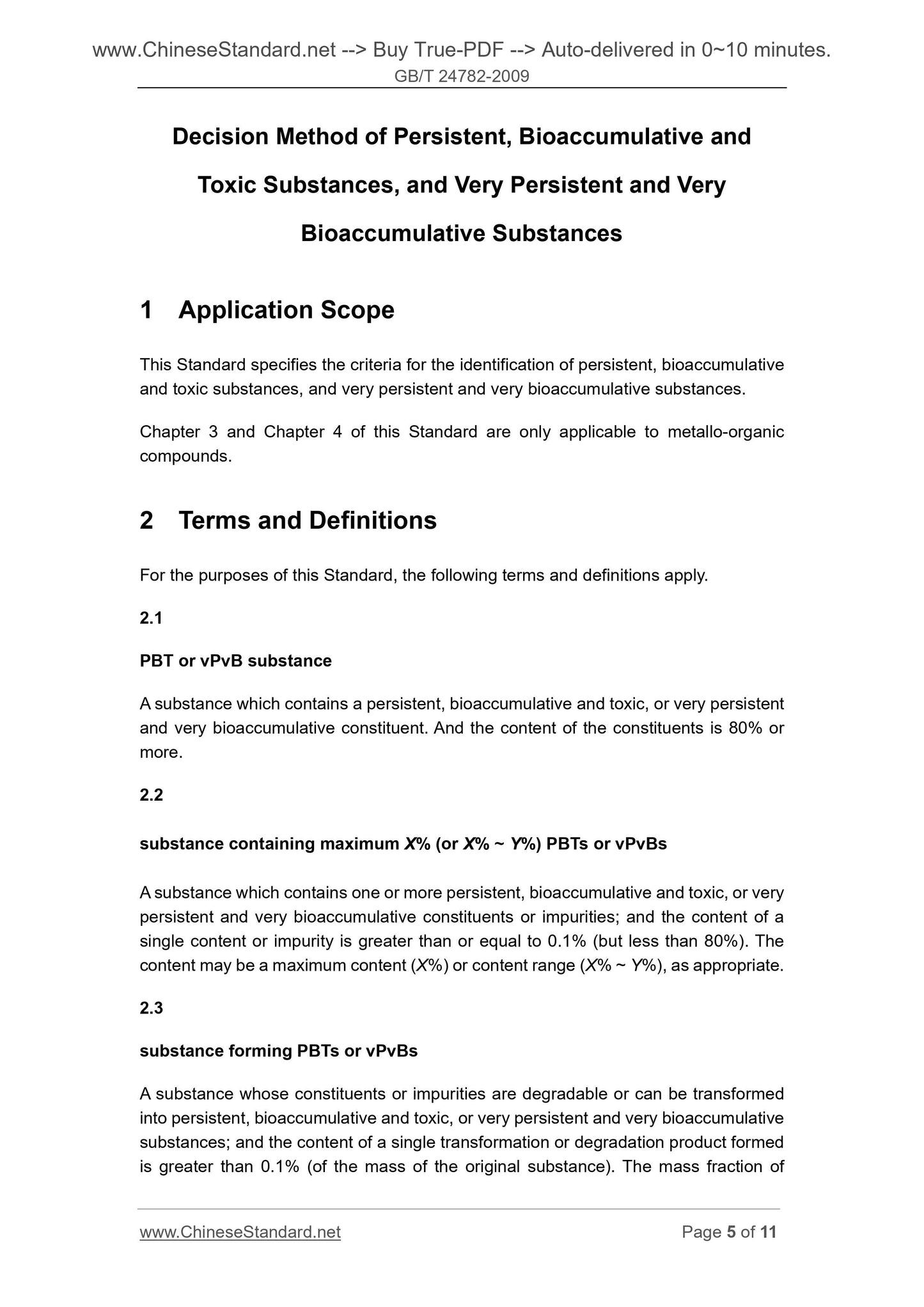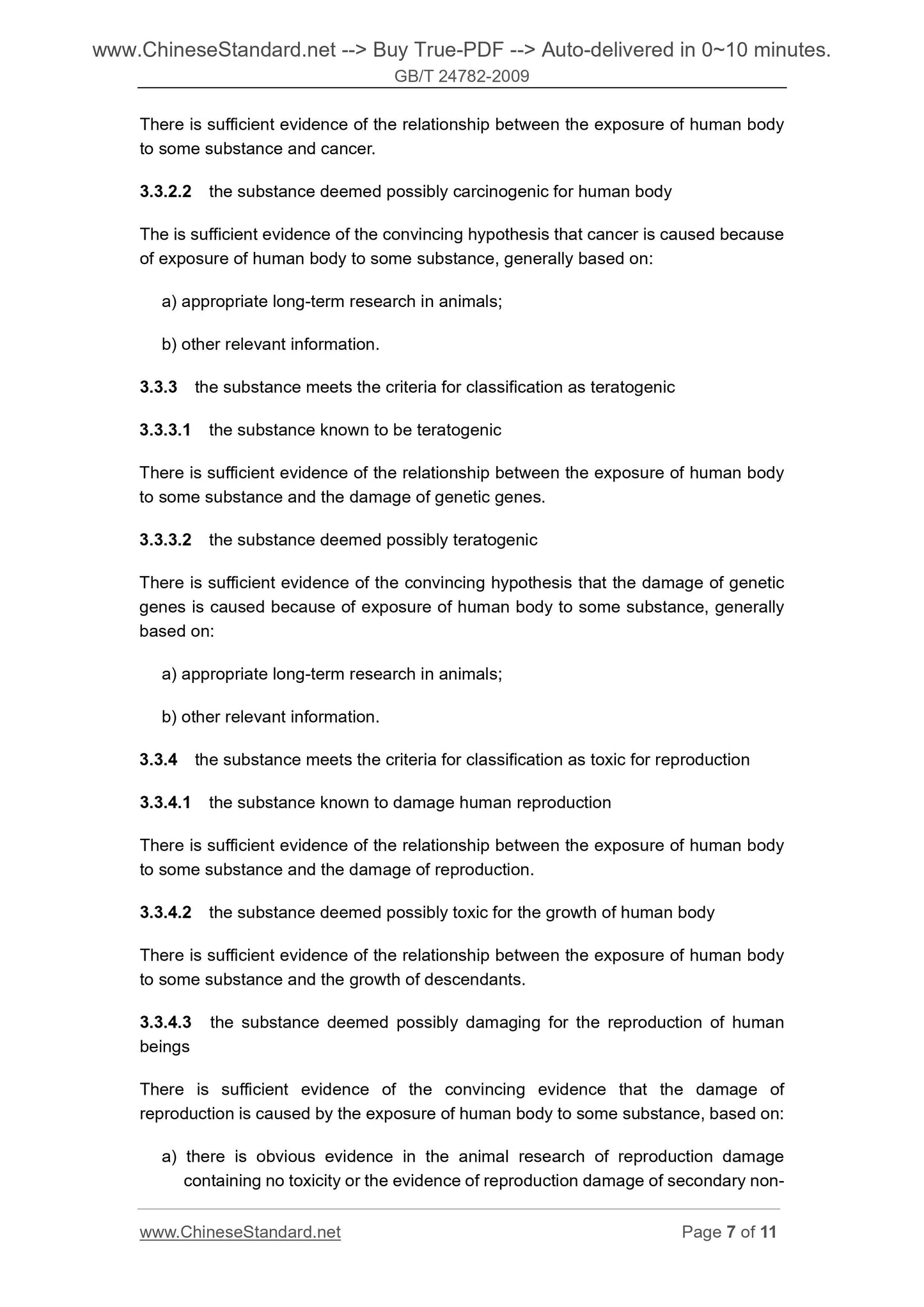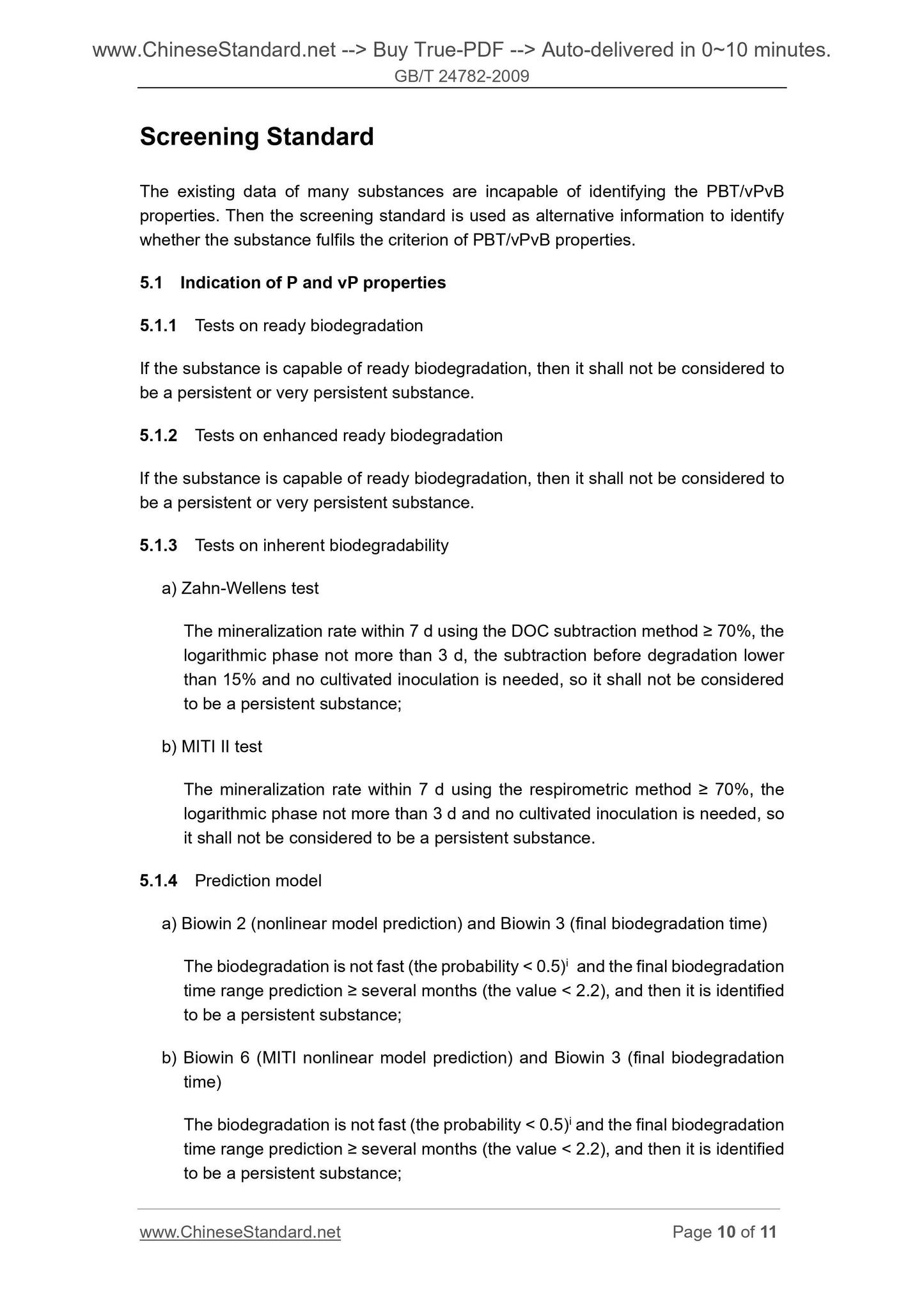1
/
of
6
www.ChineseStandard.us -- Field Test Asia Pte. Ltd.
GB/T 24782-2009 English PDF (GB/T24782-2009)
GB/T 24782-2009 English PDF (GB/T24782-2009)
Regular price
$90.00
Regular price
Sale price
$90.00
Unit price
/
per
Shipping calculated at checkout.
Couldn't load pickup availability
GB/T 24782-2009: Decision Method of Persistent, Bioaccumulative and Toxic Substances, and Very Persistent and Very Bioaccumulative Substances
Delivery: 9 seconds. Download (and Email) true-PDF + Invoice.Get Quotation: Click GB/T 24782-2009 (Self-service in 1-minute)
Newer / historical versions: GB/T 24782-2009
Preview True-PDF
Scope
This Standard specifies the criteria for the identification of persistent, bioaccumulativeand toxic substances, and very persistent and very bioaccumulative substances.
Chapter 3 and Chapter 4 of this Standard are only applicable to metallo-organic
compounds.
Basic Data
| Standard ID | GB/T 24782-2009 (GB/T24782-2009) |
| Description (Translated English) | Decision Method of Persistent, Bioaccumulative and Toxic Substances, and Very Persistent and Very Bioaccumulative Substances |
| Sector / Industry | National Standard (Recommended) |
| Classification of Chinese Standard | A80 |
| Classification of International Standard | 13.300 |
| Word Count Estimation | 7,734 |
| Date of Issue | 2009-12-15 |
| Date of Implementation | 2010-07-01 |
| Regulation (derived from) | Announcement of Newly Approved National Standards No. 15 of 2009 (total 155) |
| Issuing agency(ies) | General Administration of Quality Supervision, Inspection and Quarantine of the People's Republic of China, Standardization Administration of the People's Republic of China |
| Summary | This standard specifies the persistent, bioaccumulative and toxic substances, and very persistent and very bioaccumulative substances criteria. This standard Chapters 3 and 4 apply only to organometallic compounds. |
Share
